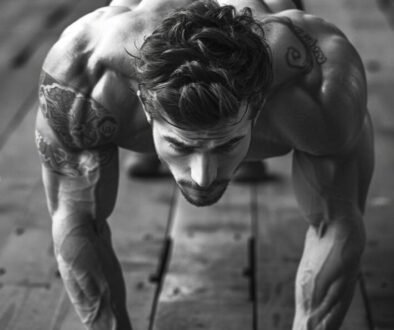Bodyweight Lunges: A Powerful Workout For Lower Body Strength

Bodyweight Lunges: A Comprehensive Guide to Lower Body Strength
When it comes to effective lower body workouts, squats often steal the spotlight. They are a powerhouse exercise for building leg strength and muscle. However, bodyweight lunges deserve equal attention for their unique benefits and versatility. This article will explore why bodyweight lunges are a valuable addition to your fitness routine, how they compare to squats, and how you can incorporate them into your workouts for optimal results.
Understanding Bodyweight Lunges
What Are Bodyweight Lunges?
Bodyweight lunges are a lower body exercise where you step forward with one leg and lower your body until both knees are bent at approximately 90 degrees. Unlike squats, which involve both legs working simultaneously, lunges work each leg independently. This exercise is excellent for targeting the muscles in your legs, glutes, and hips, and it helps improve balance and stability.
Benefits of Bodyweight Lunges
- Enhanced Stabilization and Balance
Bodyweight lunges engage stabilizing muscles in your hips and core, which helps improve balance and coordination. As you step forward and lower your body, your stabilizer muscles work to keep you steady, which is crucial for activities that require quick changes in direction or maintaining stability during dynamic movements.
- Improved Eccentric Strength
Eccentric strength is the ability of your muscles to control and generate force while lengthening. Bodyweight lunges enhance this strength by challenging your muscles to decelerate your body as you lower yourself. This ability to control movement is essential for activities such as hiking, running, and jumping, where sudden changes in speed or direction are common.
- Hip Flexor Stretch and Strength
The lunge provides a beneficial stretch to the hip flexors, a group of muscles that are often tight due to prolonged sitting. Stretching these muscles improves flexibility and mobility, which can alleviate lower back pain and improve overall movement efficiency. Additionally, lunges strengthen the hip flexors, contributing to better speed and agility.
- Versatility and Adaptability
Bodyweight lunges are highly adaptable and can be modified to suit various fitness levels and goals. You can perform them as part of a high-rep workout to improve cardiovascular fitness or incorporate weights to increase strength. This versatility makes them a valuable exercise for both beginners and advanced athletes.
How to Perform Bodyweight Lunges Correctly
Step-by-Step Guide
- Starting Position
Begin by standing with your feet hip-width apart. Keep your chest up, shoulders back, and core engaged.
- Step Forward
Take a large step forward with one foot, lowering your body until your front thigh is parallel to the ground and your back knee nearly touches the floor. Ensure that your front knee is aligned with your ankle and does not extend beyond your toes.
- Return to Starting Position
Push through the heel of your front foot to return to the starting position. Maintain a strong core and avoid leaning forward.
- Alternate Legs
Repeat the movement on the opposite leg. Continue alternating legs for the desired number of repetitions.
Incorporating Bodyweight Lunges Into Your Routine
Bodyweight Lunges for Strength and Conditioning
To build strength and endurance, incorporate bodyweight lunges into your workout routine with the following suggestions:
- High-Repetition Workouts: Perform lunges in sets of 15-20 repetitions per leg to enhance cardiovascular fitness and muscular endurance.
- Strength Training: Add external weights, such as dumbbells or a barbell, to increase resistance and challenge your muscles further.
Lunges for Mobility and Flexibility
If your goal is to improve mobility and flexibility, use bodyweight lunges as a warm-up or stretching exercise:
- Dynamic Stretching: Perform walking lunges with a focus on the stretch in your hip flexors and hamstrings.
- Static Stretching: Hold the lunge position for 20-30 seconds on each side to deepen the stretch and improve flexibility.
Common Mistakes and How to Avoid Them
1. Improper Knee Alignment
Ensure that your front knee remains aligned with your ankle and does not extend beyond your toes. This alignment helps prevent unnecessary strain on the knee joint and ensures proper form.
2. Leaning Forward
Keep your chest upright and avoid leaning forward. Leaning can place excessive pressure on your lower back and reduce the effectiveness of the exercise.
3. Insufficient Depth
Aim to lower your body until your front thigh is parallel to the ground. Shallow lunges may not fully engage the target muscles or provide the desired benefits.
Conclusion
Bodyweight lunges are an invaluable exercise for anyone looking to enhance lower body strength, balance, and flexibility. By incorporating them into your workout routine, you can target key muscles, improve eccentric strength, and increase overall functional fitness. Whether you are aiming to build endurance, enhance agility, or simply add variety to your workouts, bodyweight lunges are a versatile and effective choice. So, give them a try and see how they can elevate your fitness journey.



